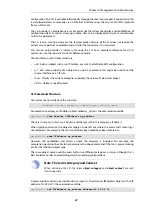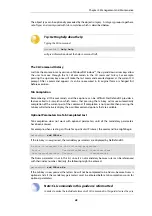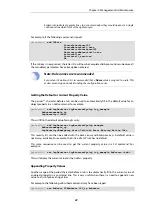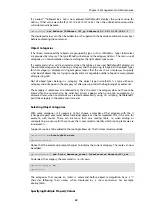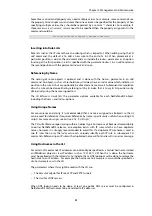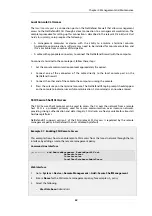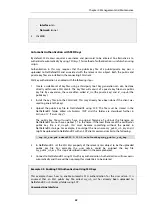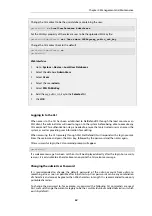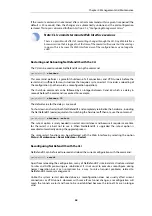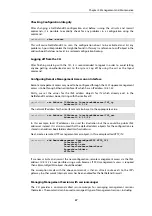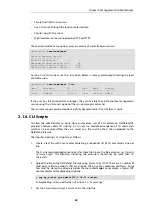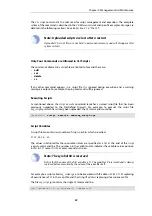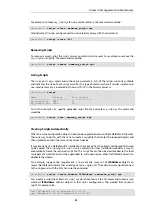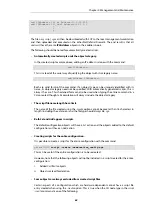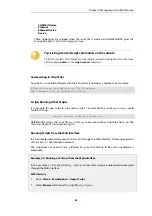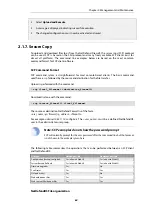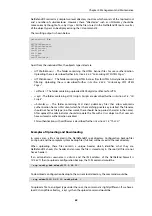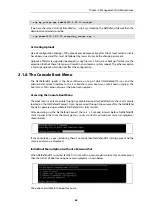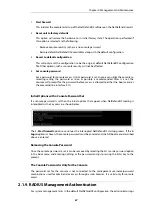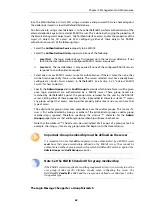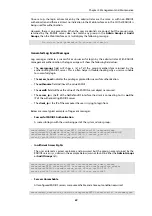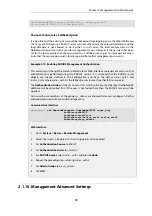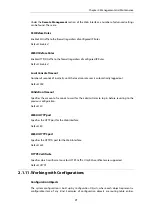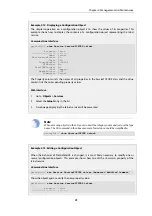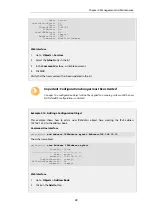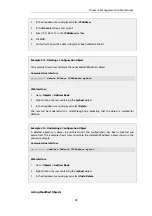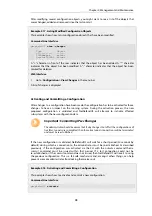
For example, to move
my_script.sgs
to non-volatile memory, the command would be:
gw-world:/> script -store -name=my_script.sgs
Alternatively, all scripts can be moved to non-volatile memory with the command:
gw-world:/> script -store -all
Removing Scripts
To remove a saved script, the
script -remove
command can be used. For example, to remove the
my_script.sgs
script file, the command would be:
gw-world:/> script -remove -name=my_script.sgs
Listing Scripts
The
script
on its own, command without any parameters, lists all the scripts currently available
and indicates the size of each script as well as the type of memory where it resides (residence in
non-volatile memory is indicated by the word "
Disk
" in the
Memory
column).
gw-world:/> script
Name
Storage
Size (bytes)
--------------
------------
--------------
my_script.sgs
RAM
8
my_script2.sgs
Disk
10
To list the content of a specific uploaded script file, for example
my_script.sgs
the command
would be:
gw-world:/> script -show -name=my_script.sgs
Creating Scripts Automatically
When the same configuration objects needs to be copied between multiple NetDefend Firewalls,
then one way to do this with the CLI is to create a script file that creates the required objects and
then upload to and run the same script on each device.
If we already have a NetDefendOS installation that already has the objects configured that need
to be copied, then running the
script -create
command on that installation provides a way to
automatically create the required script file. This script file can then be downloaded to the local
management workstation and then uploaded to and executed on other NetDefend Firewalls to
duplicate the objects.
For example, suppose the requirement is to create the same set of IP4Address objects on
several NetDefend Firewalls that already exist on a single unit. The administrator would connect
to the single unit with the CLI and issue the command:
gw-world:/> script -create Address IP4Address -name=new_script.sgs
This creates a script file called
new_script_sgs
which contains all the CLI commands necessary to
create all IP4Address address objects in that unit's configuration. The created file's contents
might, for example, be:
add IP4Address If1_ip Address=10.6.60.10
add IP4Address If1_net Address=10.6.60.0/24
Chapter 2: Management and Maintenance
61
Summary of Contents for NetDefendOS
Page 30: ...Figure 1 3 Packet Flow Schematic Part III Chapter 1 NetDefendOS Overview 30 ...
Page 32: ...Chapter 1 NetDefendOS Overview 32 ...
Page 144: ...Chapter 2 Management and Maintenance 144 ...
Page 284: ...Chapter 3 Fundamentals 284 ...
Page 392: ...Chapter 4 Routing 392 ...
Page 419: ... Host 2001 DB8 1 MAC 00 90 12 13 14 15 5 Click OK Chapter 5 DHCP Services 419 ...
Page 420: ...Chapter 5 DHCP Services 420 ...
Page 573: ...Chapter 6 Security Mechanisms 573 ...
Page 607: ...Chapter 7 Address Translation 607 ...
Page 666: ...Chapter 8 User Authentication 666 ...
Page 775: ...Chapter 9 VPN 775 ...
Page 819: ...Chapter 10 Traffic Management 819 ...
Page 842: ...Chapter 11 High Availability 842 ...
Page 866: ...Default Enabled Chapter 13 Advanced Settings 866 ...
Page 879: ...Chapter 13 Advanced Settings 879 ...

